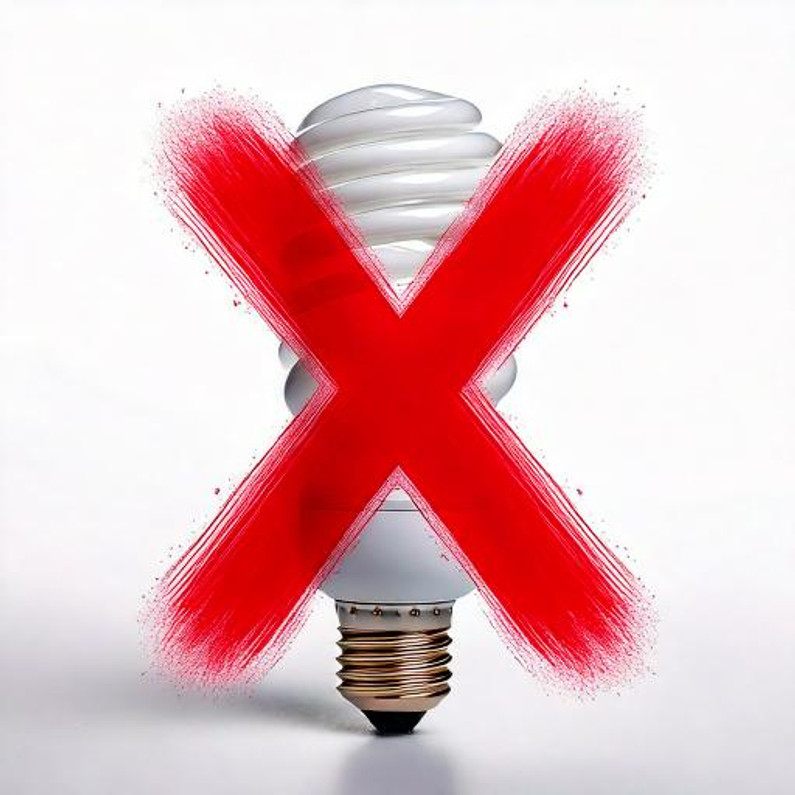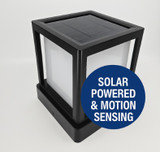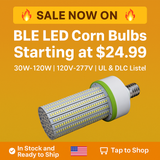Colorado’s Clean Lighting Act: What You Need to Know About the Fluorescent Lamp Ban
In recent years, environmental and public health concerns have prompted states to rethink their approach to lighting. Fluorescent lamps, once hailed for their energy efficiency, have become problematic due to their mercury content. Now, Colorado is taking action. With the passing of House Bill 23-1161, also known as the "Clean Lighting Act," the state has set a clear path to phase out most fluorescent lamps by January 1, 2025. This move aligns with a broader shift towards safer, more sustainable lighting solutions that protect both human health and the environment. But what does this new law entail, and how will it impact residents, businesses, and organizations in Colorado?
Overview of the Clean Lighting Act
The Clean Lighting Act, House Bill 23-1161, is part of Colorado's larger strategy to address climate change and reduce harmful pollutants. The bill prohibits the manufacture, distribution, and sale of most types of fluorescent lamps within the state. Starting in 2025, retailers and distributors will no longer be able to sell linear fluorescent lamps and compact fluorescent lamps (CFLs) in Colorado, encouraging a transition to mercury-free and energy-efficient alternatives like LED lighting.
The primary goal of the Clean Lighting Act is to eliminate the risks associated with mercury-containing lamps. Mercury, a highly toxic heavy metal, can leach into soil and water systems when lamps are improperly disposed of, posing long-term environmental risks. By eliminating a significant source of mercury pollution, Colorado is taking a proactive approach to safeguard its ecosystems and public health.
Why Ban Fluorescent Lamps?
While fluorescent lamps offered a breakthrough in energy efficiency compared to older incandescent bulbs, they come with a significant drawback: mercury. Each fluorescent lamp contains a small amount of mercury, a substance that can be harmful even in trace amounts. When these lamps are broken or improperly disposed of, mercury can be released into the environment, where it contaminates soil, water, and air. Over time, mercury accumulates in living organisms, causing harm to wildlife and posing risks to human health.
Mercury exposure has been linked to a range of health issues, including neurological and developmental problems, especially in young children and fetuses. Colorado's Clean Lighting Act reflects a growing recognition of these dangers and the need to eliminate preventable sources of mercury exposure. As fluorescent lamps age and reach the end of their lifespan, they can end up in landfills where the mercury can escape and cause lasting harm.
Beyond environmental concerns, the push for a ban on fluorescent lamps is also rooted in advances in lighting technology. LED lights, for example, offer greater energy efficiency and longer lifespan without the toxic byproducts. These benefits make LEDs a preferred choice for consumers and policymakers alike.
Key Details of the Ban
The Clean Lighting Act is comprehensive in scope but includes specific exemptions to accommodate essential services. The ban covers most linear fluorescent lamps and compact fluorescent lamps (CFLs), which are commonly used in homes, offices, and commercial buildings. These lamps come in a range of shapes and sizes and are particularly popular in settings that require bright, ambient lighting.
However, recognizing that some specialized applications still rely on fluorescent technology, the bill includes exemptions for certain types of lamps. For example, fluorescent lamps used in medical or veterinary diagnosis, germicidal applications, image capture, and research purposes are exempt from the ban. This ensures that essential services are not disrupted while still prioritizing environmental and public health.
Colorado’s approach is deliberate, providing a phased timeline for implementation. By setting a 2025 deadline, the state gives retailers, businesses, and consumers ample time to transition to alternative lighting options. This grace period also allows for public awareness efforts to educate people about the importance of the ban and the advantages of switching to Induction and/or LED lighting.
Compliance and Enforcement
The responsibility for enforcing the Clean Lighting Act falls primarily on the Colorado Department of Public Health and Environment (CDPHE). The CDPHE is tasked with ensuring that retailers and distributors comply with the new regulations. To do this, the department will conduct random spot-checks, both in-store and online, to verify that banned fluorescent lamps are not being sold in Colorado.
If the CDPHE identifies any violations, they will report them to the state attorney general, who has the authority to impose civil penalties on offending businesses. This enforcement mechanism is designed to deter non-compliance and ensure a smooth transition to mercury-free lighting options.
One key aspect of the law’s enforcement strategy is its coordination with other states that have implemented similar bans. By aligning with states like California and Vermont, Colorado can share resources and knowledge to improve compliance and reduce the availability of banned products across state lines. This collaborative approach is essential in an era when online sales and interstate commerce make enforcement more challenging.
What This Means for Consumers and Businesses
For consumers and businesses in Colorado, the Clean Lighting Act marks a turning point in how we approach lighting. Many homes, offices, and commercial spaces rely heavily on fluorescent lamps due to their affordability and long lifespan. With the ban in place, individuals and organizations will need to explore alternative lighting solutions.
Fortunately, the transition to both Induction and LED lighting offers a range of benefits. Both lights are not only free from mercury vapor but are also more energy-efficient and durable. Induction and LEDs consume less electricity than fluorescent lamps, helping to reduce energy bills and carbon emissions. Their longer lifespan also means fewer replacements, which reduces waste and maintenance costs. Although the upfront cost of either may be higher, their long-term savings make them a smart investment for both individuals and businesses.
For businesses, especially those with extensive lighting needs, planning ahead is essential. Switching to Induction or LEDs may require initial investments in new fixtures or bulbs, but the improved efficiency and reduced environmental impact make this a worthwhile change. By making the switch early, businesses can also avoid potential supply chain disruptions or price increases that may arise as the 2025 deadline approaches.
Similar Legislation in Other States
Colorado is not alone in its efforts to phase out fluorescent lighting. States like California and Vermont have enacted similar bans, driven by the same environmental and public health concerns. These states recognize that fluorescent lamps, once considered an eco-friendly alternative, are now outdated and problematic.
California, for example, has been at the forefront of mercury reduction initiatives, having banned most mercury-containing lamps as part of its Hazardous Waste Control Law. Vermont’s legislation is also designed to minimize mercury pollution and reduce the availability of fluorescent lamps within the state.
The Clean Lighting Act reflects a larger national trend towards sustainable, mercury-free lighting. As more states adopt similar regulations, manufacturers and retailers will face increased pressure to shift their production and distribution towards Induction lighting or LED lights. In time, this could lead to a nationwide transition to safer, more energy-efficient lighting options.
Our Take
Colorado’s Clean Lighting Act represents a significant step towards a cleaner, healthier environment. By phasing out fluorescent lamps, the state is reducing the risks associated with mercury pollution and encouraging the adoption of modern, efficient lighting solutions. This transition is not only beneficial for the planet but also for consumers and businesses looking to reduce their energy costs and environmental impact.
The 2025 deadline provides ample time for individuals and organizations to make the switch to LED lighting, but early action is encouraged. LED and Induction lighting offer a host of advantages, from energy savings to durability, making them a smart choice for the future. As we move away from fluorescent lighting, we’re embracing a more sustainable approach that benefits everyone.
Want More?
For readers looking to learn more, there are numerous resources available to help with the transition to better lighting. Energy efficiency programs, rebates, and incentives may also be available in your area, making it easier to make the switch. Spread the word about Colorado’s Clean Lighting Act and consider upgrading your own lighting solutions to take advantage of the many benefits LEDs have to offer.
Recent Posts
-
How Long Will Solar Powered Lighting Operate in the Rain?
How Solar Light Fixtures Can Run for 10 Rainy Days If you’ve ever wondered how a Commercial solar li …Jul 30th 2025 -
Spotlight - The IL-SPG54 Smart Solar Walkway Light: Where Performance Meets Simplicity
Introducing the IL-SPG54 Smart Solar Walkway Light: Where Performance Meets Simplicity When it comes …Jun 16th 2025 -
Corn Bulb Sale - While supplies last!
⚡ Limited Time Sale – BLE Series Corn Lamps Starting at $24.99! Stock up now while supplies last – p …Jun 11th 2025






